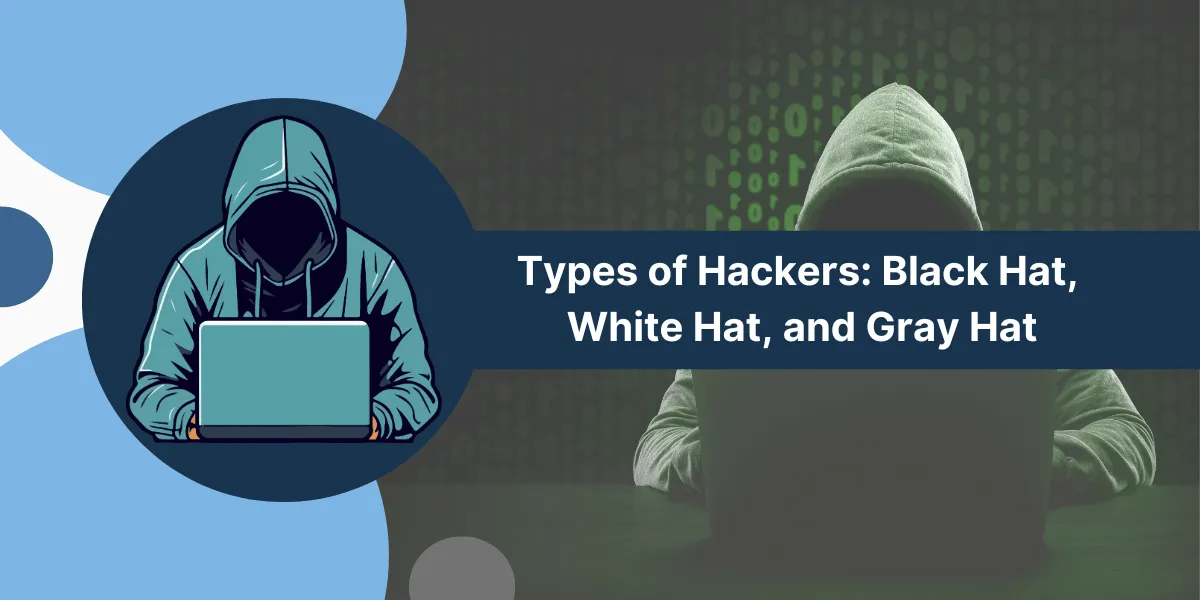Hacker Term Definition
The term “hacker” often evokes images of cybercriminals, but the reality is far more complex. Hacker types encompass a broad spectrum of individuals with diverse motives, skills, and expertise. These hacker types can be classified based on intent, such as white, black, or grey hat hackers, or by their level of technical proficiency, ranging from novice “script kiddies” to elite hackers. Each category within the various hacker types employs different attacks, exploits, and infiltration methods to achieve their goals, which can range from malicious activities like data theft and network disruption to ethical pursuits like improving cybersecurity. Understanding these diverse hacker types is crucial for developing comprehensive cybersecurity strategies and appreciating the nuanced landscape of the hacking world.
This article provides a comprehensive overview of the different categories and classifications of hackers, profiling their characteristics, motivations, and common tactics. It also examines the most prevalent types of cyber attacks and hacking methods used to exploit vulnerabilities in networks, systems, and applications. Understanding the taxonomy of the hacking world enables individuals and organizations to better defend against, respond to, and thwart the efforts of cybercriminals.
Key Takeaways
- Hackers can be classified based on their motives (white, black, grey hats), skills (script kiddies, elite), and methods (SQL injection, phishing, DDoS attacks).
- White hat hackers use hacking skills ethically for legal penetration testing, cybersecurity, and to expose vulnerabilities.
- Black hat hackers break into systems illegally for personal gain, stealing data, spreading malware, or profiting from cybercrime.
- Grey hat hackers fall between white and black hats, engaging in unethical but not strictly illegal hacking activities.
- Script kiddies possess limited technical skills and use hacking tools developed by others to deface websites or launch DDoS attacks.
- Elite hackers are highly skilled at penetrating complex systems through methods like social engineering, customized malware, and zero-day exploits.
- Different types of hacking attacks include phishing, DDoS, man-in-the-middle, SQL injection, spear phishing, and WiFi hacking.
- Hackers stay up-to-date on new exploits and form online communities to share tools, knowledge, and technical tips.
What are the Different Types of Hackers
- White Hat Hackers
- Black Hat Hackers
- Grey Hat Hackers
White Hat Hackers
White hat hackers, also known as ethical hackers, are computer experts who specialize in testing and penetrating systems on behalf of clients to find and fix security vulnerabilities. They always operate with permission and work to enhance system and network security. Many top white hat hackers are cybersecurity researchers and consultants hired to carry out legal penetration tests and vulnerability assessments for businesses and organizations. Others may work in government agencies’ cyber operations.
Unlike black hat hackers, white hat hackers do not break into systems with malicious intent. Their goal is to identify weaknesses, bugs, and flaws to improve security and protect against exploitation. Common white hat hacking techniques include network mapping, vulnerability scanning, social engineering, malware simulation, and simulated cyber-attacks. Many respected security conferences feature presentations by renowned white hat hackers. There is also an International Council of E-Commerce Consultants (EC-Council) certification called Certified Ethical Hacker (CEH) that validates this professional discipline.
Black Hat Hackers
As the name suggests, black hat hackers are individuals who hack with malicious intent. In contrast to ethical hackers, black hats break into computer systems illegally without authorization or consent. Their motivations range from personal gain to pure maliciousness.
Common black hat hacking goals include:
- They are stealing confidential data.
- Propagating malware.
- They are committing financial fraud.
- They are shutting down networks with distributed denial of service (DDoS) attacks.
- Defacing websites.
Black hat hackers may operate solo as lone cybercriminals or belong to sophisticated hacking groups and syndicates. While technically skilled, their actions violate computer crime laws. High-profile examples of black hat hacks include large credit card data breaches, massive password leaks, and ransomware campaigns that have crippled businesses, hospitals, and government agencies. Both law enforcement agencies and ethical hackers constantly seek to track, expose, and thwart black hat activities.
Grey Hat Hackers
There is also a grey area between white hat and black hat hacking occupied by grey hat hackers. While not strictly ethical, grey hats do not engage in clearly illegal cybercrime activities. Their exploits may violate a website’s terms of service by scraping data, but they do not steal credit card numbers or compromise sensitive information. Other grey hat activities can include responsible disclosure practices where flaws are revealed to tech firms without permission to nudge them to address and fix bugs.
Some grey hat behavior inhabits legal gray zones, fueling debates among security experts. For example, grey hats may deliberately look for vulnerabilities or conduct network scans without explicit approval. They argue that “permissionless penetration testing” ultimately improves the security ecosystem. However, companies may view unsolicited intrusions into production systems as criminal hacking. The boundaries between ethical hacking, unethical yet legal hacking, and unlawful cybercrimes are not always sharply defined.
What are the Different Types of Hackers Based on Skills?
- Script Kiddies
- Elite Hackers
Script Kiddies
Script kiddies are novice hackers who possess only rudimentary technical knowledge. They do not have sophisticated programming or hacking abilities. Instead, script kiddies rely on easy-to-use automated tools, exploit kits, and hacking scripts developed by others to infiltrate systems and Deface websites. While viewed as a nuisance in the hacker community, their large numbers and readily available attack tools allow script kiddies to outmatch typical home and small business security.
Common script kiddie attacks include distributed denial of service (DDoS) floods using botnets, spraying vulnerable networks with credential-stuffing bots, and exploiting unpatched routers, IoT devices, and VPN appliances with malware toolkits. With access to hacker forums on the darknet, they can search for and download point-and-click hacking software. Script kiddies may also use programs like Shodan to identify unsecured ports and vulnerable servers to target. Due to their reliance on pre-built tools, script kiddie attacks tend to be noisy, reckless, and easy for skilled defenders to trace.
Elite Hackers
Elite or advanced persistent threat (APT) hackers represent the opposite end of the spectrum from script kiddies. These highly skilled hacking experts exhibit deep technical knowledge, programming proficiency, and expert-level capabilities. Using customized malware, zero-day exploits, sophisticated social engineering tactics, and other advanced tradecrafts, they can penetrate complex networks, evade detection, and maintain persistent system access undetected for prolonged periods.
Elite hacker groups are responsible for orchestrating clandestine cyber warfare and espionage campaigns against governments, stealing intellectual property from technology and manufacturing firms, and targeting critical infrastructure. They carry out exhaustive reconnaissance across extended timeframes, probing for the smallest vulnerabilities. When they compromise systems, elite hackers ensure backdoors for later lateral movement using covert command and control channels. Due to their knowledge and patience, elite hacker attacks are much harder to contain and mitigate compared to amateur script kiddie activities.
Different Types of Cyber Attacks and Hacking Methods
Beyond motives and abilities, hackers employ different tools, techniques, and attack vectors to achieve their goals. Common types of cyberattacks and hacking approaches include:
- Phishing Attacks
- Man-in-the-Middle Attacks (MitM)
- Denial of Service and DDoS Attacks
- SQL Injection Attacks
- Cross-Site Scripting Attacks (XSS)
- WiFi Hacking
- Supply Chain Attacks
- Ransomware Attacks
- Insider Threats
Phishing Attacks
Phishing uses spoofed emails, fake websites, and fraudulent social media profiles, impersonating trusted entities to trick users into revealing login credentials or sensitive data. Successful phishing provides hackers with a foothold in systems, while spear phishing targets specific high-value victims like executives.
Man-in-the-Middle Attacks (MitM)
A Man-in-The-Middle attack intercepts communication between two parties, enabling data theft or injection of malicious code. MitM attacks leverage unsecured public WiFi and DNS spoofing.
Denial of Service and DDoS Attacks
Flooding systems with bogus traffic can disrupt connectivity. Distributed denial of service (DDoS) attacks use an army of hijacked devices to overwhelm sites and take them offline.
SQL Injection Attacks
They are injecting malicious SQL code into application input fields to trick databases into exposing data. SQLi is one of the most common website hacking methods.
Cross-Site Scripting Attacks (XSS)
Cross-Site Scripting Attacks (XSS) injects malicious scripts into vulnerable websites trusted by users. This lets hackers bypass access controls and steal session cookies, credentials, and sensitive site data.
WiFi Hacking
Hackers crack weak WiFi passwords to gain network access. They may also set up malicious hotspots impersonating legitimate networks to launch man-in-the-middle attacks.
Supply Chain Attacks
By compromising trusted third-party suppliers, hackers can secretly backdoor software updates and patches delivered to targets, providing an invisible avenue for system infiltration.
Ransomware Attacks
Malware that encrypts data until ransom demands are paid. Ransomware typically spreads via phishing links and attachments but can also exploit unpatched systems.
Insider Threats
Malicious actors from within the organization are especially dangerous since they bypass perimeter defenses. Disgruntled or negligent insiders may steal data or enable external hacker access.
Hacker Subculture, Motivations, and Notable Groups
Beyond technical skills, hackers often belong to unique online subcultures that influence their motivations and moral codes.
Understanding these factors provides insight into the hacker mindset:
Sense of Curiosity and Pursuit of Knowledge
For both white and black hat hackers, the intellectual challenge of overcoming complex technical obstacles drives their relentless pursuit of new knowledge. Hacking satisfies their curiosity as they constantly push boundaries. Many start as teenagers, building programming expertise before joining hacker communities.
Reputation and Credibility
Reputations are paramount in the hacker underground. Skilled hackers who uncover major exploits gain prestige and credibility. Newbies must prove their abilities through demonstrations and competitions. Pseudonyms protect hacker identities. Only respected members gain access to restricted forums.
Anti-Authoritarian Ethos
The hacker world values independence and circumventing imposed restrictions. While productive for white hats, black hats justify illegal acts as challenging corrupt powers. However, most hackers agree violating personal privacy and property is unethical.
Sense of Community
From early groups like YIPL/TAP to today’s Anonymous, tight-knit online hacker communities share tips, tools, and techniques. Trusted forums on the dark web exclude infiltrators. They also police black hat activities that endanger others.
Profit-Driven Cybercrime
In addition to fame-seeking hobbyists, many black hat groups are now profit-driven cybercrime organizations. Financially motivated hackers may specialize in theft, extortion, fraud, or selling access to hijacked systems and stolen data.
State-Sponsored Groups
Governments like Russia, China, North Korea, and Iran fund sophisticated state hacker groups that engage in cyber espionage and disinformation campaigns aligned with national interests.
Chaotic Good Hacktivists
Hacktivists like Anonymous breach systems to push political agendas or expose perceived corruption. Their methods are illegal, but motivations tend toward social justice causes rather than theft or destruction.
Final Thoughts
In summary, rather than a single monolithic group, hackers comprise a diverse spectrum of actors with distinct motivations, abilities, and methods. Classifying hackers based on hats, skills, techniques, and motivations provides a framework for understanding the multifaceted cyber threat environment.
While malicious black hat hackers pose significant risks, ethical hackers striving to better security defenses also inhabit the space. The hacker world offers insight into human psychology – from intellectual curiosity, prestige seeking, and anti-establishment sentiment to the allure of forbidden knowledge.
By dissecting the taxonomy of hackers, cybersecurity experts, companies, and law enforcement organizations can better defend against, respond to, and counteract destructive hacking activities.
Frequently Asked Questions
What are the main types of hackers?
The three main types of hackers are black hat, white hat, and gray hat hackers.
What is a black hat hacker?
A black hat hacker is someone who hacks for illegal or malicious purposes like stealing data or causing damage to systems.
What is a white hat hacker?
A white hat hacker is an ethical hacker who hacks systems to test and improve their security, usually working for cybersecurity companies.
What is a gray hat hacker?
A gray hat hacker falls between black and white hat hackers, often hacking systems without malicious intent but in legally and ethically gray areas.
What do ethical hackers do?
Ethical hackers, usually white hats, hack systems legally to test their security, find weaknesses, and improve defenses.
Why is it important to know about different hacker types?
Knowing hacker types helps identify threats, hire ethical hackers, and learn to prevent malicious attacks.

Priya Mervana
 Verified Web Security Experts
Verified Web Security Experts
Priya Mervana is working at SSLInsights.com as a web security expert with over 10 years of experience writing about encryption, SSL certificates, and online privacy. She aims to make complex security topics easily understandable for everyday internet users.



